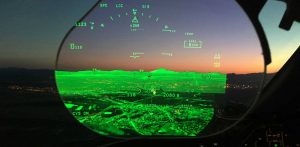Flying with the Dassault Falcon FalconEye Combined Vision System

Flying with the Dassault Falcon FalconEye Combined Vision System
Source: AIO TV – Aug 29, 2018\
The FalconEye head-up display (HUD) combines live enhanced vision system (EVS) imagery with database-drive synthetic vision system (SVS) imagery. Dassault engineers have been working on FalconEye since 2011, and it was certified in 2016 in the Falcon 2000 and 900 then in the 8X in early 2017.
By the end of 2018, Dassault expects to receive certification for “EFVS to 100 feet” operations in the 8X,
then in the 2000/LXS and 900LX in the first half of 2019.
Enhanced flight vision system (EFVS) to 100 feet is the capability under current regulations allowing pilots
to fly HUD-equipped airplanes to 100 feet before switching to natural vision to complete the landing. Eventually, Dassault plans to certify FalconEye-equipped jets for “EFVS to land” operations, which means
pilots could fly an approach and land without using natural vision to see the runway, although there will be
minimum visibility requirements.
Essentially, Dassault is aiming to create a new HUD-enabled capability, which it calls “equivalent visual
operation,” or EVO, allowing pilots to land safely at all types of airports in all kinds of weather and without
the need for expensive added equipment, time-consuming training, and operational limitations that come
with Cat II and III approaches.
Although FalconEye is an option on new Falcons, most buyers, especially those opting for the 8X, are
choosing the new HUD. On the new 6X, FalconEye will be standard equipment. Dual HUD installations
will also be available for the 8X and 6X.

